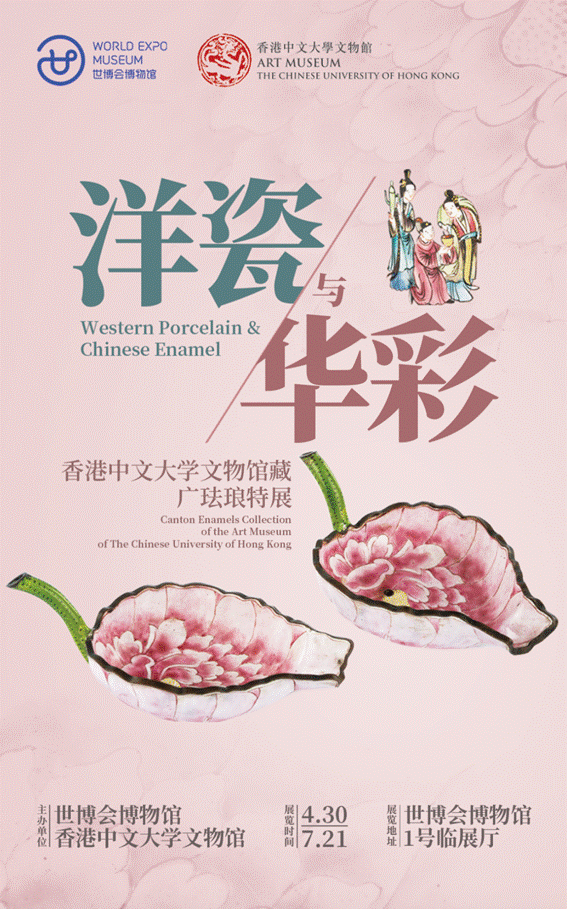Western Porcelain & Chinese Enamel| A "New" straw cup? It's a heavyweight guest!
日期:06-07-2024 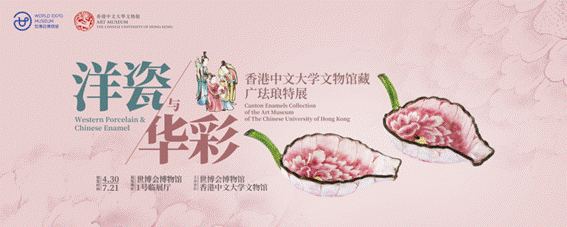
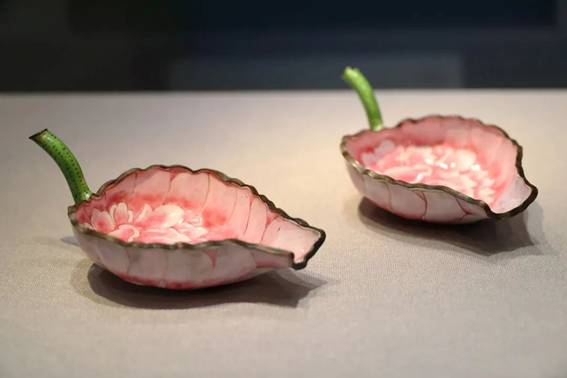
Pair of Cups in the Form of a Lotus Flower
Qianlong or Jiaqing period of the Qing dynasty
Huaihai Tang Collection
The Pair of Cups in the Form of a Lotus Flower was honored by the literati as the most elegant wine set, and its flower stems were hollowed out and went straight to the bottom for absorbing water. Cups are often imitated in the shape of lotus leaves, but this cup is unique in that it turns a lotus leaf into a peony.
A commemorative cup for the autumn exercise near Taihu Lake, Anhui Province, in the 34th year of the Guangxu reign.
It has the same shape and decoration as the present exhibit.
This cup was made during the Guangxu period to commemorate the autumn drills of the Qing army.
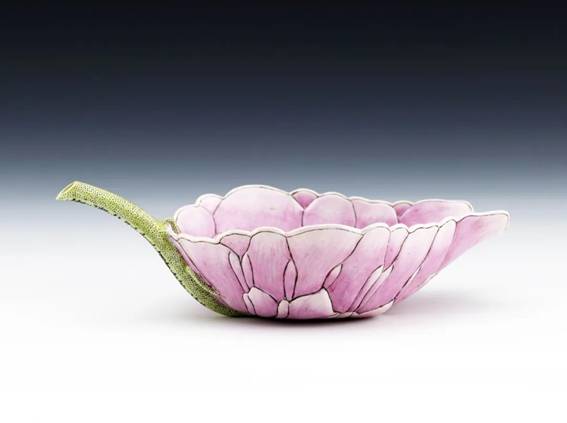
Commemorative Cup for the Autumn Exercise near Taihu Lake, Anhui Province, in the 34th Year of the Guangxu Period
Shanghai Museum
In addition to this cup, the ancients knew how to drink tea and coffee, and embodied the word "sophistication" to the fullest extent.
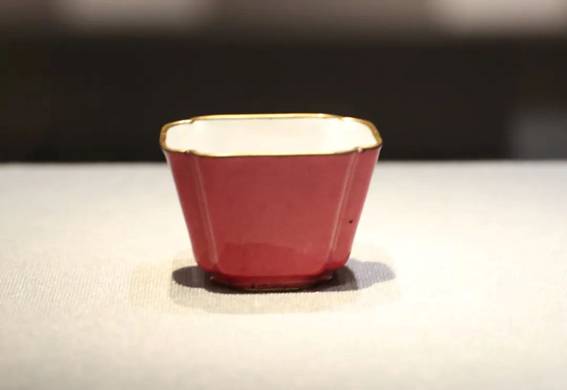
Cup with Indented Corners and Floral Sprays
Kangxi or Qianlong period of the Qing dynasty
Art Museum of The Chinese University of Hong Kong Collection
Donation by Mr. Zhuang Guilun
The application of carmine glaze on the exterior is a characteristic feature of early Canton enamels. The color was introduced to China from Europe and was successfully produced in Canton at the end of the Kangxi period. The pure color of this cup indicates a high level of craftsmanship.
These square cups were often paired with square plates to serve tea, coffee or chocolate.

Rectangular Cup with Indented Corners and Westerners in Framed Panels
Kangxi or Yongzheng period of the Qing dynasty
Art Museum of The Chinese University of Hong Kong Collection
Donation by Chenxun Tang
Western figures are the most creative and expressive decorative motifs in Canton enamel. The combination of Chinese and Western figures and compositions are both present on this small square cup with a single handle. These small cups were often served after dinner to guests and were used to serve strong flavored coffees such as espresso.
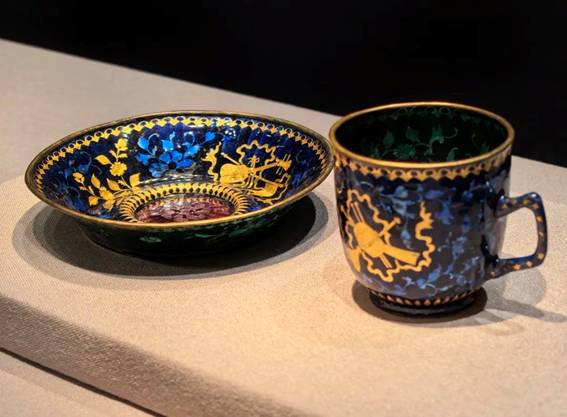
Basse-tailleEnamel Cup and Saucer with Floral Designs in Gold and Silver Foil
Late eighteenth to first half of the nineteenth century
Chenxun Tang Collection
These types of cups and saucers were commonly used for drinking tea, coffee or hot chocolate in 17th and 18th century Europe.
Instead of drinking from a cup, people poured the coffee or tea from the cup into a saucer to cool it down and served it directly from the saucer.

Woman Drinking Coffee.
1774, Collection of the Metropolitan Museum of Art, U.S.A.
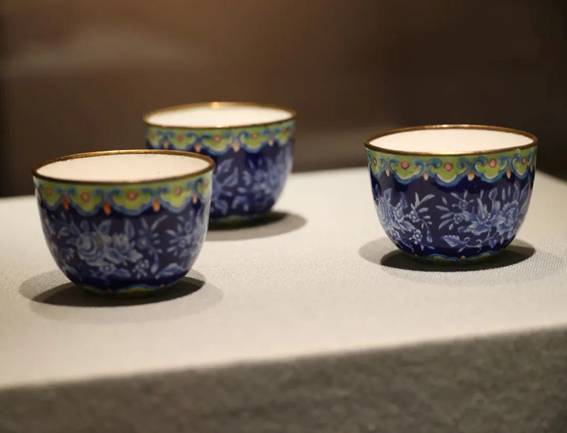
Cups with Floral Sprays
Late eighteenth to first half of the nineteenth century
Art Museum of The Chinese University of Hong Kong Collection
Donation by Mr.Zhuang Guilun
Painted with white flowers on the blue enamel, the white flowers are also covered with a light blue coloring, this color scheme is the exact opposite of the blue on white pattern of the imitation lapis lazuli, and is presumed to have originated from tin-glazed pottery produced at Nevers, France, in the late seventeenth century.
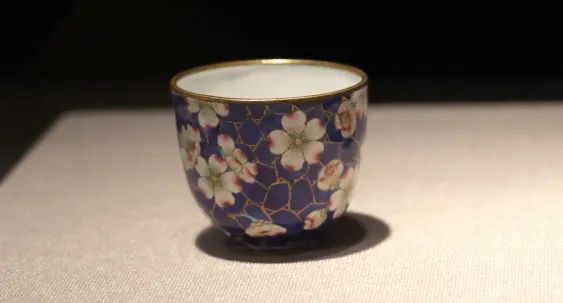
Cup with lce-crackled Plum Patterns
Qianlong or Jiaqing period of the Qing dynasty
Art Museum of The Chinese University of Hong Kong Collection
Donation by Mr.Zhuang Guilun
Ice-plum Patterns, a special pattern combining ice-crackled and plum blossom patterns, is made by imitating the ice-crackled patterns of the official kilns of the Song Dynasty as the ground and painting plum blossoms on its glaze. Ice-plum pattern can be seen on porcelain, painted enamelware and pinched enamelware, and has a long history of use.
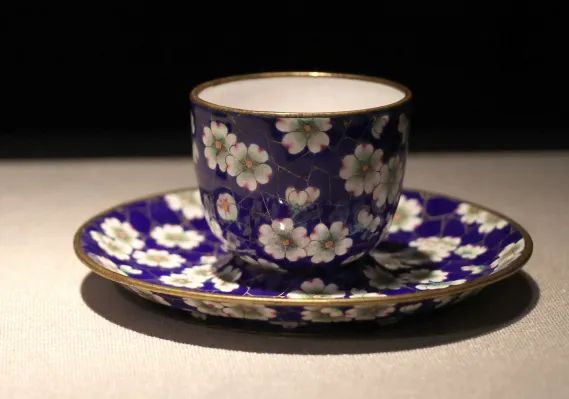
Cup and Saucer with lce-crackled Plum Patterns
Jiaqing period of the Qing dynasty
Art Museum of The Chinese University of Hong Kong Collection
Donation by Mr.Zhuang Guilun
The Ice-plum Pattern was created during the Kangxi period of the Qing dynasty and was popular, not limited to export or imperial use, as in the case of this set of cups and saucers, which are inscribed on the underside with the mark "Jiaqing nian zhi"(Made during the Jiaqing period). This set of cups and saucers is decorated with an ice-plum pattern on a turquoise-blue enamel, and in the form of a coffee cup.
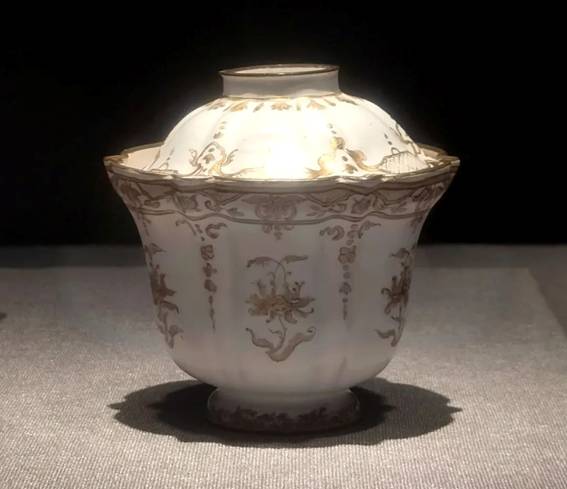
Gold-traced and Foliate-rimed Covered Cup with Floral Patterns
Qianlong period of the Qing dynasty
Art Museum of The Chinese University of Hong Kong Collection
Donation by Mr.Zhuang Guilun
The shape of this cup is derived from traditional Chinese tea bowls, but the pattern is distinctly European. The diamond-shaped rim of the lid and the pattern at the intersection of the two sides of the cup's outer wall are similar to the gilt cups, plates and teapots that were sold to the Netherlands in the 1740s and 1760s.
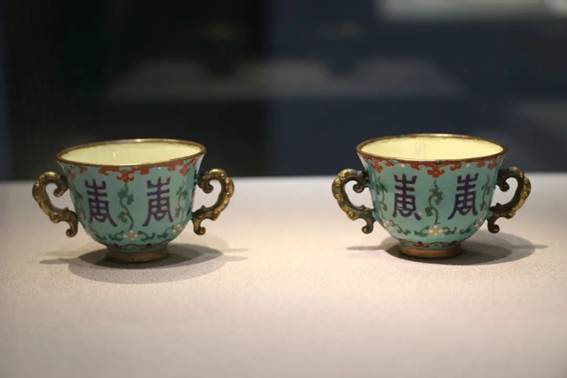
Pair of Two-handled Cups with Characters for Longevity
First half of the nineteenth century
Art Museum of The Chinese University of Hong Kong Collection
Donation by Mr.Zhuang Guilun
The pine-green is decorated with the word "Shou"(longevity) in blue enamel, with entwined flowers between the words. Simplified dragon pattern near the rim of the mouth, and a circle of Ruyiyuntou pattern
near the foot of the cup. Gilt-bronze dragon-shaped amphora with antique amphora cup, stylized to resemble the jade cups and plates popular in the Ming and Qing dynasties.
